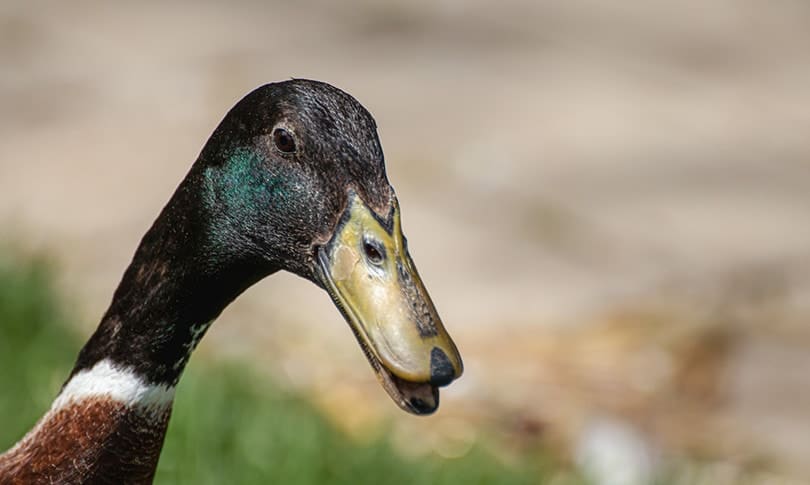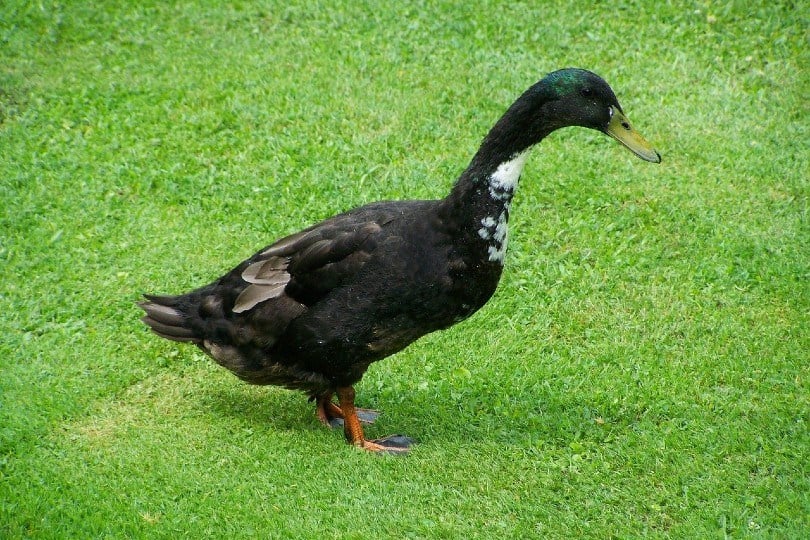Looking for some interesting information on Indian Runner Ducks? You’ve come to the right place! In this blog post, we will provide you with pictures, traits, and care instructions for these unique creatures. If you’re thinking of adding an Indian Runner Duck to your family, be sure to read through this guide first!

Quick Facts About Indian Runner Ducks
| Breed Name: | Indian Runner Duck |
| Place of Origin: | Indonesia |
| Uses: | Eggs and meat |
| Male Size: | 3-5 lbs. |
| Female Size: | 3-4 lbs. |
| Color: | White, black, brown, and silver |
| Lifespan: | 15 years |
| Climate Tolerance: | All climates |
| Production: | Eggs and meat |
Indian Runner Duck Origins
Indian Runner Ducks originated in Indonesia and were brought to Europe in the 1800s. Indian Runners are popular pets because of their friendly nature and unique appearance.
They came to the United States in the early 1900s and quickly became a favorite among duck enthusiasts. These ducks are often used for shows and exhibitions because of their beauty.

Indian Runner Duck Characteristics
Indian Runner Ducks are easily recognizable by their long, slender bodies and upright stance. These ducks typically weigh between four and six pounds. They come in a variety of colors, including white, black, brown, and silver.
Indian Runner Ducks are known for being friendly and docile. They make great pets for families with children.
Temperament
Indian Runner Ducks are generally calm and gentle. They may become aggressive if they feel threatened or if they are protecting their young. These ducks typically get along well with other animals, including dogs and cats.
Lifespan
The average lifespan of an Indian Runner Duck is about 15 years.
Colors
Indian Runner Ducks come in a variety of colors, including white, black, brown, and silver.

Sounds and Vocalizations
Indian Runner Ducks are relatively quiet compared to other duck breeds. They typically make soft cooing sounds.
Diet
Indian Runner Ducks eat a variety of foods, including insects, crustaceans, aquatic plants, and small mammals.
In the Wild
In the wild, these ducks forage for food in ponds, lakes, and streams.
In Captivity
In captivity, Indian Runner Ducks should be given a diet that consists of duck pellets, vegetables, fruits, and water.
Uses
Indian Runner Ducks are great for both eggs and meat. Females can lay up to 300-350 eggs per year, possibly more. Duck eggs are a nutritious food that can be eaten scrambled, boiled, or fried. Indian Runner Ducks are also great for meat production. They are considered to be a light-class bird, but they are great for eating due to their meat to bone ratio. Duck meat is a delicious and nutritious food that can be cooked in a variety of ways.
Population/Distribution/Habitat
Indian Runner Ducks typically live in wetlands, such as marshes, swamps, and ponds. In the wild, these ducks build nests in trees or on the ground. In captivity, Indian Runner Ducks can live in a variety of environments, including backyards, barnyards, and parks.

Are Indian Runner Ducks Good for Small-Scale Farming?
Indian Runner Ducks are great for small-scale farming. If you’re interested in adding them to your farm, here’s everything you need to know.
Care
Indian Runner Ducks are relatively easy to care for. These ducks need a spacious enclosure that contains a pond or pool of water. The enclosure should also have plenty of places for the ducks to hide and sleep. Indian Runner Ducks should be given a diet that consists of duck pellets, vegetables, fruits, and water. These ducks also need access to a daily supply of fresh water for bathing and drinking.
Cost
Indian Runner Ducks typically cost between $25 and $50. These ducks are available from a variety of sources, including pet stores, breeders, and online retailers. The average yearly cost of ownership for an Indian Runner Duck is about $100. This includes the cost of food, housing, and medical care.
Breeding
Indian Runner Ducks typically lay between eight and twelve eggs per clutch. These ducks hatch in about 28 days. The ducklings are typically ready to leave the nest after two weeks.
 Adding to the Farm
Adding to the Farm
Do Indian Runner Ducks Get Along With Other Animals?
Yes, Indian Runner Ducks typically get along well with other animals, including dogs and cats. These ducks are usually docile and calm, but they may become aggressive if they feel threatened or if they are protecting their young.

Do Indian Runner Ducks Make Good Pets?
Yes, Indian Runner Ducks make great pets for families with children. These ducks are typically friendly and docile. They also have a lifespan of 15 years, which is longer than most other duck breeds.
How to Hatch Indian Runner Eggs
To hatch Indian Runner eggs, you will need an incubator and a brooder. The incubation period for these eggs is 28 days. The ducklings should be placed in the brooder when they are two weeks old.
How to Raise Indian Runner Chicks
If you want to raise Indian Runner Ducks at home, you will need to purchase a duckling from a hatchery or breeder. Ducklings typically cost between $25 and $50. You will also need to provide the duckling with a spacious enclosure that contains a pond or pool of water. The enclosure should also have plenty of places for the duck to hide and sleep. Indian Runner Ducks should be given a diet that consists of duck pellets, vegetables, fruits, and water. These ducks also need access to a daily supply of fresh water for bathing and drinking.
Considerations
When considering adding an Indian Runner Duck to your family, there are a few things you should keep in mind. First, these ducks need a lot of space. They also require a diet that consists of duck pellets, vegetables, fruits, and water. Indian Runner Ducks also need access to a daily supply of fresh water for bathing and drinking.
- Friendly nature
- Unique appearance
- Easy to care for
- Relatively low cost
- Require a lot of space
- Specialized diet
- May become aggressive if threatened
Health Problems
Indian Runner Ducks are generally healthy, but they are susceptible to a few health problems. These include obesity, bumblefoot, and respiratory infections. It is important to take your duck to the vet for regular checkups to ensure that it stays healthy and happy.
Required Veterinary Care
Indian Runner Ducks require the same veterinary care as other pets. This includes routine checkups, vaccinations, and treatments for illness and injury. Common vaccinations for ducks include those for Newcastle disease and influenza.
Grooming
Indian Runner Ducks do not require a lot of grooming. These ducks should be given a bath every week or two using warm water and mild soap. Their nails should also be trimmed on a regular basis.
Should You Get an Indian Runner Duck?
Here are some things to consider before getting an Indian Runner Duck:
- Are you looking for a pet or a farm animal?
- Do you have enough space for a duck?
- Can you provide a diet that consists of duck pellets, vegetables, fruits, and water?
- Are you prepared to clean the duck enclosure on a regular basis?
- Do you live in an area where ducks are allowed?
If you answered yes to all of these questions, then an Indian Runner Duck might be a good fit for you!
 Conclusion
Conclusion
Indian Runner Ducks make great pets for families with children. They are friendly, docile, and easy to care for. These ducks also have a unique appearance that is sure to turn heads. If you are considering adding an Indian Runner Duck to your family, be sure to keep in mind that these ducks need a lot of space and a specialized diet. With proper care, your Indian Runner Duck will be a loyal and loving companion for years to come.
Featured Image Credit: Anna Armbrust, Pixabay
